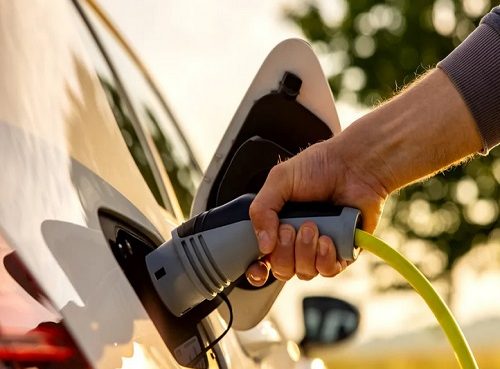For marketers around the world, creating brand awareness is becoming increasingly challenging, especially with the increasing number of digital platforms available to them. While many feel digital branding is the way of the future, for some industries traditional branding and marketing campaigns through advertising or physical events are still relevant and critical for their business.
There is no denying that the methods have changed over the years and are seemingly headed for more change in the future. But the objectives remain the same – creating an impact that is enough to convince decision-makers.
According to a Forrester report as reported by MarTech, annual worldwide spending on marketing is expected to reach US$4.7 trillion by 2025. The IT software and services will be the biggest dollar growth driver. While IT software and services represented 7% of marketing investment in 2021, it will drive 14% of the dollar growth from 2021 to 2025 – by far the most of any industry. It has been a big beneficiary of the digital transformation spurred by the pandemic.
With the tech industry expected to dominate marketing spending, the statistics however cannot be applied to how much organizations actually spend on technology. True enough, demand for better tech services is increasing but for more organizations, the budget on technology, especially for cybersecurity, backup, and even storage may not be the priority.
Businesses invest in technology but it’s mostly on how they can improve their productivity and increase their profits. While there is an allocation for cybersecurity and such, the main chunk of their budget normally goes towards upgrading their cloud infrastructure or other digital transformation initiatives.
So for companies like Aruba, which focuses on network and SD-WAN solutions that use AI to automate and secure the network from edge to cloud, they are often caught in the middle of business tech spending. For Aruba, creating brand awareness of what they do and the importance of having their solution is just part of the process.
Sylvia Hooks, Chief Marketing Officer at Aruba. Hooks shared how the company has continued to build its brand following the acquisition from HPE several years ago. Here’s our conversation with her.
When it comes to Asia Pacific, how does Aruba approach each country to market its products?
It is a unique region. We have people assigned to customize our messaging and our outreach for each individual area. For example, Japan is very unique and so it’s important that we approach it as a specific culture and market. China is also unique and different. We’re looking at unique ways to go to Taiwan. Every country has its own uniqueness.
We do try to customize and tailor our events, and also our marketing outreach for each of those communities. We balance the corporate message with the individual regional needs, and it has to be a very careful balance. We don’t want to lose relevance with our markets. But we don’t want to appear to be speaking with different voices either. So you have to balance the two things.
Did the COVID-19 pandemic make it easier because everything was done virtually?
We definitely had to take a customized approach. And I wouldn’t say it was easier. We were used to doing some live events and some digital events, and then to be thrown into doing entirely digital, we were afraid of losing the intimacy with our customers. So we’ve had to do extra work to try and maintain that intimacy. Now we’ve settled into it.
But of course, the market is changing again. We’re going back to some individual events. One thing that I really like about the current market, or the current landscape is the technology. We have the ability now to target individual accounts with their own unique messaging going into the new year. That’s really what we’re going to be doubling down in how we take relevant messages, not only to the country level but to the individual account level.
What are the best practices when it comes to using technology?
We’re investing a lot in technology and it’s a learning curve for our sales teams as well. One of the classic challenges for marketing is to make sure that we stay relevant with our sales counterparts. And I think that Account Based Marketing really allows us to forge that partnership together.
So we don’t have to argue about who’s really contributing or whether are we going after the right things. We can use the info that our sellers have put together for their plans, and then layer marketing on top of that. And we’re talking a lot about how we measure that impact.
I think it’s really through engagement. The technologies allow us to target in-market accounts and listen for signals to see who is a good target. But then also to translate that into social media ads, or direct outreach using LinkedIn Navigator, and such. So technology is now in a time of very rapid innovation especially in marketing technology, offering more than we’ve seen in the past decade.

When it comes to targeting, how much insights are needed?
There are a couple of different ways that we gather insights about customers. First of all, I think there’s human-to-human contact that happens with our field sellers. And also with marketers, now that we’re returning to events. There are also the digital footprints that people leave that give us a clue as to who they are, what they’re thinking about, and what they’re looking for.
We can see at a sort of internet-wide level, what kind of topics are people searching for. And then even one step further, we’re able to track on our own website, what are the pages are the products that they’re looking at. So, when you take all of those things together, sales and marketing can partner and reach out with a unique message.
And again, we have technology that allows us to do that. It wasn’t an easy transition. But it was a good solid push to figure out some things maybe that we’ve been held back by in the past. Now, we all got better at figuring out how to bring together digital clues about what a customer is interested in hearing and then giving them that message. Hence, we’re not bombarding them with different messages. We’re really focusing on what matters to them.
We’re also seeing a huge emphasis on getting data of high quality and clean because it prevents you from making mistakes like mismatch targeting.
Now that the pandemic has eased off, what’s the future like for Aruba when it comes to reaching out to customers?
I want to come back to the idea of events, because going into the new year, that is one of the areas that we’ll be reinvesting in. And my sense is that it’s really important for us to do smaller regional, local events, rather than global events.
Because first of all, some people are still reluctant to travel. There’s still some risk and people don’t really want to get sick. We concluded a big global Atmosphere event in Las Vegas in the United States. But it was hard to get the attendance that we expected.
So, it’s still not quite where we were in 2019. However, we just finished an event in Bangkok and there’s a huge amount of interest and excitement. Hence, we’ll be doubling down on how we bring local events that allow people to connect.
People are tired of video conferences. During our event in Bangkok, a marketer on the team said that people who attended didn’t want to sit in the technical breakouts for long. They wanted to be in the demo area, talking one on one with people about their content.
They want content customized to them in real-time. It’s something that I think, will do a little bit of a shift less, sitting and listening, even in relevance, and more interaction in demonstrations.
There’s always the concern of bad marketing and bad publicity as well. How can businesses deal with this?
My deeply held belief is that the key to good marketing is empathy. I think it’s the key to good management as well. And I think it’s the key to a good response to problems. I find that if we are able to lead with empathy, in a negative situation, we can very often turn that around.
So just being straightforward and neutral, acknowledging the problem, if there truly is one, and then investigating what can be done to support that customer. And Aruba has, for many years adopted the tagline customer first, customer last. And that guides so much of what we do in our decision-making. I think it’s a perfect application in a negative situation to say, what is right for the customer? And how do we help them be successful.
And the same applies to our partners as well. We put both customers and partners first. It is also the core of what I think it gets even more important in branding. For the CMO, now that we’re in a digital world, the CMO and the brand become a proxy for the whole company in connecting with the customers and partners out there.
We have to be very authentic. I think we can’t make boastful claims. We have to connect with what a customer is actually needing right and we have to lead with the customer’s need. So, I would definitely say in this digital-first world, empathy becomes even more important.
Lastly, how has the role of the CMO evolved since the pandemic?
The role of the CMO as the face of the company to customers becomes more important because we are the marketing and the communication engine to reach out. The CMO has to set the tone and really become even more customer focused. So I think my role has been at Aruba to ensure that the company’s culture and personality come through in our marketing, and we connect authentically with customers.
The role of CMO has also changed as we had to really quickly adapt to these new conditions and support our sales team. We had we explored virtual event platforms and new ways of doing virtual events, or even one-on-one by sending maybe a box of chocolate to a customer or having a chocolate tasting one-on-one with the sales team.
We had to do all sorts of brainstorming inside the marketing department to support our sales teams, because they didn’t have the ability during the pandemic, to call up and go visit somebody. So we not only had to be the strong voice to the customer that was needed but also the mechanisms for how you reach the customer in a digital-only world. So the marketing department had to quickly evolve and adapt very quickly to all the changes and find solutions to help our sellers.\
Source: techwireasia










